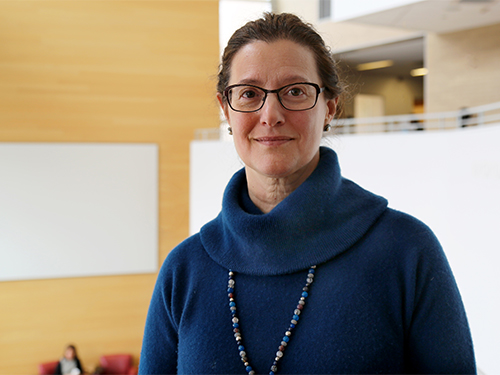
While many researchers, practitioners and policymakers in the workforce development field have spent decades focused on methods to prepare low-skilled workers for employment, Senior Scientist Janet Boguslaw is turning that paradigm on its head: How can we redesign education, training, benefits and compensation to better suit the needs as defined by the workforce? And for companies that have taken this leap — does it work?
To answer these questions, Boguslaw is studying business models centered on shared capital, such as employee stock ownership plans (ESOPs). With colleagues at Rutgers University, which received funding through the W.K. Kellogg Foundation, Boguslaw is part of a research team examining how ESOPs build wealth and opportunity for low-wage workers, especially women and people of color.
Boguslaw and the team interviewed over 188 employees at 20 companies, collecting quantitative data and creating several representative case studies. Drawing on this research, Boguslaw collaborated with PhD student Sarah Soroui to coauthor a case study book chapter, and with Anna Mahathey, MPP’17, on an essay in a Federal Reserve publication.
In an ESOP company such as Publix supermarkets, employees receive an ownership stake in the company and accrue capital wealth commensurate with the value of the company, at no cost to them. As the company grows, so does each employee’s ESOP account. Employee ESOP accounts often far exceed the value of their 401(k) plan, and the funds are accessible as soon as the employee exits the company. Boguslaw says, “I think the most important finding from our research is that workplaces with large populations of low- to moderate skilled women and people of color find this is a valuable institutional structure for helping build wealth. It can help people prepare for a more secure retirement, and because they can start drawing on those resources as soon as they leave the firm, it’s also wealth that can be passed on to the next generation in vivo. ESOPs bring more wealth and stability into communities that traditionally have less access to capital wealth.”
Companies receive significant tax incentives to operate as an ESOP. They also benefit from decreased employee turnover and increased innovative problem solving from their workforce, who become more aware and invested in the company’s future success. “The data show it is possible for the business to thrive and for profits to be more broadly shared,” says Boguslaw. “When you’re talking about companies with many low-income women and people of color, where there’s a huge wealth gap and wage gap, ESOPs can help close some of that, and that’s really unique.”
Converting a company from privately held to employee-owned is an especially attractive option for baby boomers who own thriving small- and medium-sized businesses and who may be open to selling their firm to its employees as part of a succession plan.
Boguslaw says that the biggest barrier to the growth of shared capital models is a lack of awareness and understanding of ESOPs. “I’d like to see more chambers of commerce, business associations, and city and state governments educate their members about employee ownership,” she says. “Especially these days, when many regions are struggling to keep wealth local, we want to find ways to share and circulate wealth and retain employment within regions. Shared capital models are a good way of doing it.”

